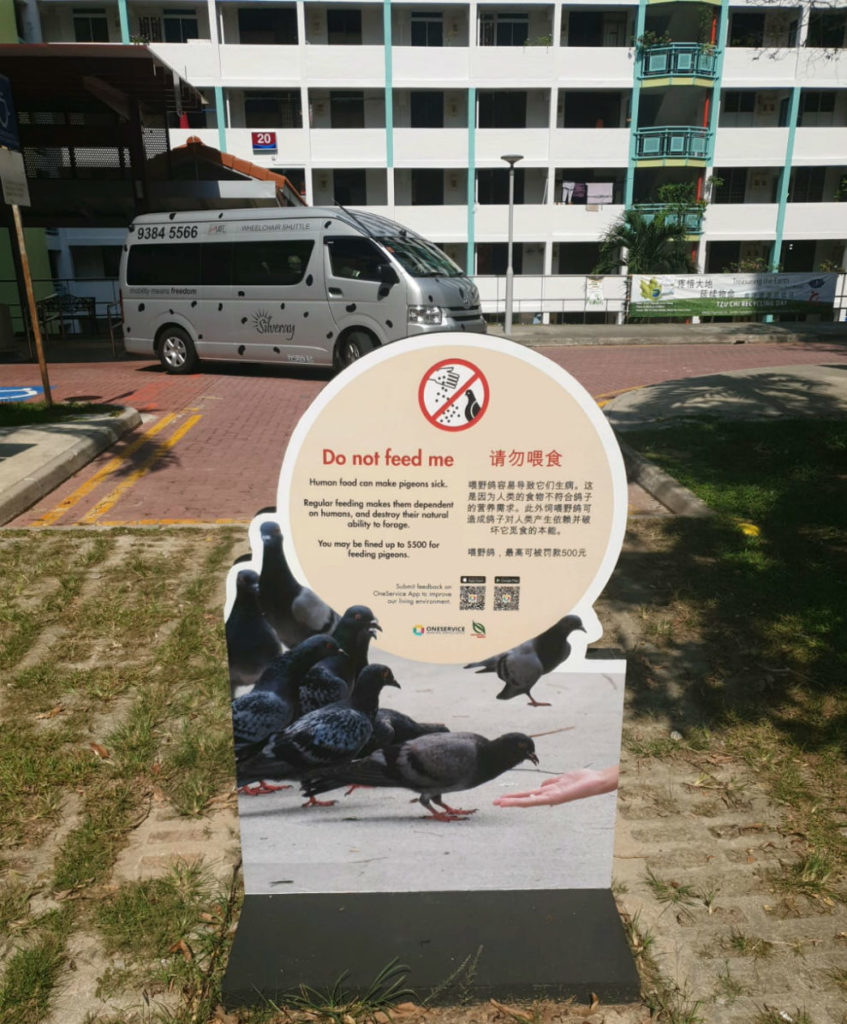A flock of poisoned pigeons has been found in a residential area in the Jalan Besar district over the last two days.
The birds were found in varying degrees of distress, some convulsing and shaking, others floppy-bodied and droopy-eyed. Some were still able to fly but were crashing into buildings. Pigeon bodies have been piling up, possibly out of a misguided effort to reduce their numbers that ACRES, the organization I volunteer with, says only aggravates the problem.
Twelve of the birds were found Tuesday evening strewn on a grassy patch beneath public housing block 22 on Havelock Road. One pigeon was floundering on a walkway roof before it was retrieved by a resident using a broom.
They were placed in boxes found behind a durian store by the resident and sent to the Animal Concerns Research and Education Society, or ACRES, rescue centre.
The pigeons, which are regarded as a pest in Singapore, were found two months after 20 poisoned pigeons were discovered in the same location.
Separately, five pigeons were found dead and two alive at a nearby housing estate on 26 Jalan Klinik on Wednesday after an eye-witness called ACRES the night before saying the person had seen someone removing dead pigeons from the area.
The birds were believed to have been baited with food laced with poison left out by the Jalan Besar Town Council. Just above the area where the pigeons were found is a sign warning residents against feeding the birds.

ACRES has approached the town council about the poisonings and has yet to receive a response. The animal welfare group also contacted the town council in January about the 20 poisoned pigeons.
Poisoned pigeons can be treated with a charcoal solution to flush out the toxin. Most will recover by the next day and can be released. Most of the birds brought in for treatment survive after charcoal treatment, according to ACRES.
Anbarasi Boopal, chief executive of ACRES, said that her organization has rescued more than 200 poisoned pigeons island-wide in the first three months of this year.
She said that culling only aggravates the problem of large pigeon populations, because without effectively reducing the food source, the removal of pigeons creates a void for other birds to move into breed, since there is more food available for fewer pigeons.
“Science has proven that culling doesn’t work, but aggravates the situation. This means that town councils will spend more dollars in the coming months culling more pigeons. At every site where we have rescued poisoned pigeons, we have found food lying around,” she said.
The National Parks Board, or NParks, reportedly said in January it had reduced culling as a way to control wild animal populations, and instead had been trying to reduce the food sources available to pest species such as pigeons. However, town councils continue to cull in response to complaints from residents.
Amendments to the Wildlife Act, passed March 25, was supposed to help reduce culling by outlawing the feeding of any sort of wild animal.
Those with any information about the pigeon poisoning are encouraged to contact the ACRES rescue hotline at 97837782.
Other stories you should see:
Rare sight of barn owl in Toa Payoh housing estate wows locals
Pigeons not pincushions: Info sought in Jurong West dart-attack
Robin Hicks is a volunteer at Animal Concerns Research and Education Society.





Reader Interactions